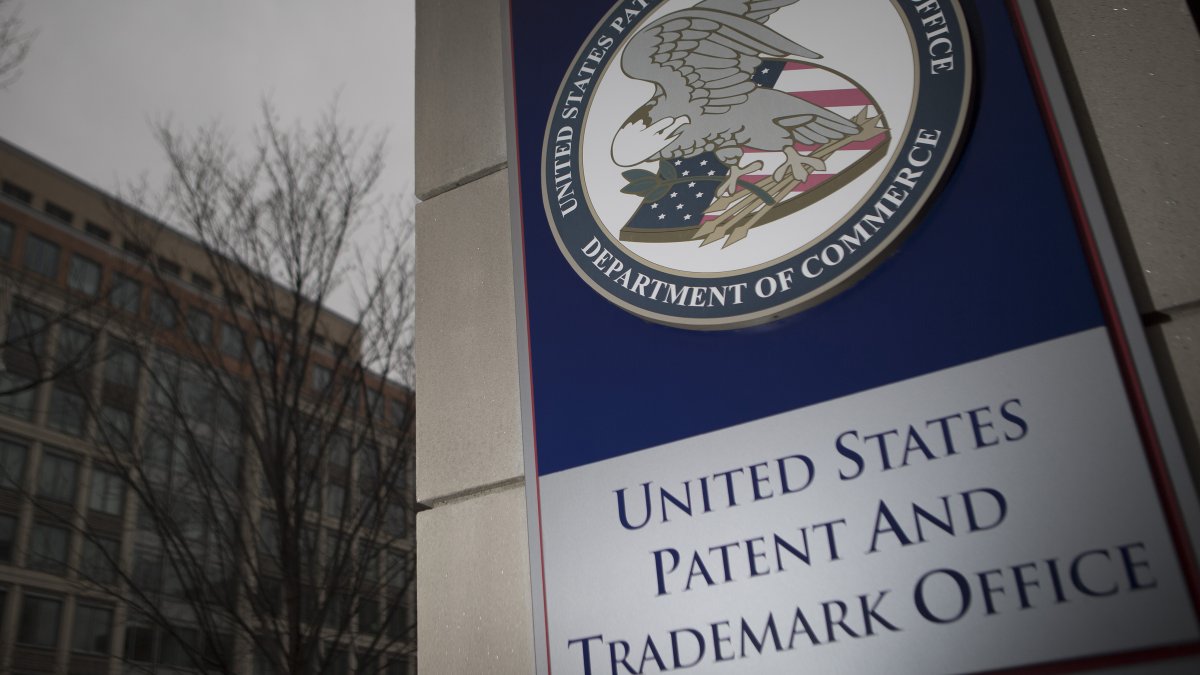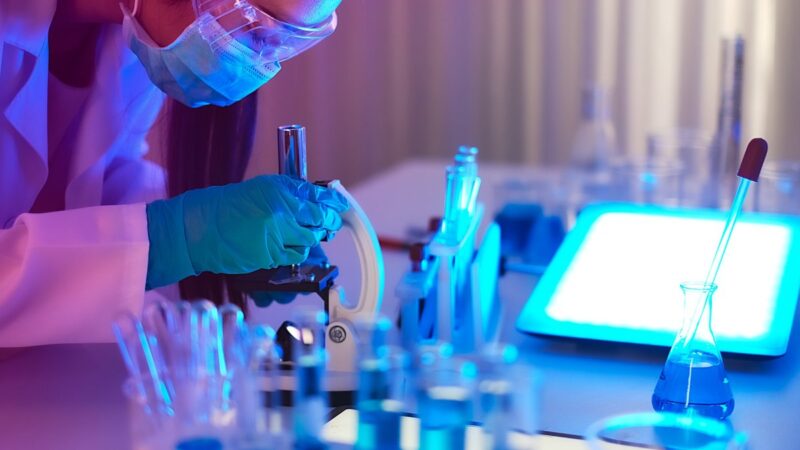Assessing the Patent and Trademark Office’s Inventorship Guidance for AI-Assisted Inventions

By Alexander Kersten
As new applications of artificial intelligence (AI) become more sophisticated, AI tools are increasingly used to assist in the process of invention. However, given that inventorship is limited to natural persons under U.S. law, AI’s growing utilization has raised questions around whether AI-assisted inventions should receive patents, with some even suggesting that AI be eligible for inventorship. To address this issue, in 2023 the Center for Strategic and International Studies (CSIS) and the Special Competitive Studies Project (SCSP) launched the Taskforce on Intellectual Property in the AI Era. The findings of this grouping of experts have subsequently been published by CSIS and SCSP, with a summary letter submitted to the U.S. Patent and Trademark Office (USPTO).
In essence, the taskforce found that existing patent laws are sufficient to handle the challenges posed by AI-assisted inventions. Moreover, the group recognizes that while AI is a sophisticated tool, human ingenuity and contributions to inventions are paramount. Overall, the taskforce found that inventions generated with the assistance of AI should be entitled to patent protection because humans are ultimately responsible for these inventions, and such patentability creates incentives for humans to collaborate with others in a market and in this way advance the pace and scope of innovation.
This acceleration of innovation is critical to the growing technological competition now playing out between the United States and its partners against China and other rivals. Rapid advances in this new technological domain require a clear legal framework and robust patent protection to incentivize and foster innovation. Particularly with AI’s rapid advancement, prioritization of policies and investments that support innovation in the United States is key to ensure the nation’s continued global technological leadership, economic growth, and national security.
The Proposed USPTO Guidelines
The federal government has a key role to play in creating this framework for incentivizing innovation via a clear recognition of rights around the use of AI in the invention process. Accordingly, following President Joe Biden’s October 30, 2023 Executive Order on the Safe, Secure, and Trustworthy Development and Use of Artificial Intelligence, on February 13 the USPTO put out a notice and called for public comment on proposed “Inventorship Guidance for AI-Assisted Inventions.”
In their response, the CSIS-SCSP taskforce emphasized that it is important that these guidelines leave no ambiguity around the issue of joint inventorship and so-called “obviousness” criteria as they relate to artificial intelligence usage. The patent system exists to encourage greater innovation, and policies around the use of AI by inventors should similarly incentivize greater innovation by fostering a clear legal framework that maintains the importance of human inventorship.
Breaking Down the Guidance’s Key Points
The USPTO’s February 2024 guidelines do well in clarifying some previous misconceptions or murky areas around AI-assisted inventions—namely, that inventors and joint inventors must be natural persons, that AI-assisted inventions are not categorically unpatentable for improper inventorship, and that there must be “significant contribution” to conception based on joint inventorship law. Further, the guidance is laudable in defining several guiding principles that similarly align with the recommendations that the CSIS-SCSP taskforce shared with the USPTO in fall 2023.
Even so, the guidance falls short by not expressly recognizing that AI is merely a tool and that all inventions that involve humans in any capacity should be eligible for patents. The guidance also fails to clearly define what the USPTO considers to be an “AI tool” that must be disclosed during prosecution, as compared to any other computer or technological tool that is not subject to the new disclosure requirement. Treating AI as categorically different from other advanced tools is unwarranted, especially given AI’s current capabilities and uses.
In particular, the CSIS-SCSP taskforce identified four key areas in need of clarification:
- The proposed USPTO guidance correctly acknowledges that AI cannot be an inventor by law. Yet, the guidance considers the AI in question as a potential contributor to an invention. Applying joint inventorship law to human and AI-generated inventions, as the guidance does, effectively assumes that AI is a joint inventor, thus seemingly comparing the human’s contribution to the invention to that of the AI. The USPTO should recognize instead that AI is merely a tool that humans use in the inventive process.
- Overall, the USPTO guidance worryingly raises the threshold for qualifying as a human inventor.
- Further guidance is needed on other issues when AI aids in invention generation, including “obviousness” (a patentability requirement is that the invention is nonobvious, meaning that not just anyone could have stumbled upon something novel). For example, will using certain AI models or certain prompts for invention generation be considered “obvious,” and thus possibly invalidate patentability?
- If AI is indeed to be treated differently from other computing tools, as the USPTO’s guidance seems to indicate, then the USPTO should clearly define what AI is and where the line is drawn. The same is true for prompts and other needed definitions.
Addressing Joint Inventorship
The USPTO-proposed guidance lists various examples that illustrate patentability in situations where a human has undeniably made a significant contribution to an invention, such as when a human in a laboratory setting modifies a chemical compound recommended by AI (which requires significant action that the human had to have taken before an invention came about). However, the guidance does not explore certain gray areas, such as what might constitute the minimal requirements for human contribution to satisfy inventorship. While the guidance does liken AI to a sophisticated tool, it applies joint inventorship law to AI-human idea generation—a legal context applied when humans jointly contribute to an invention. Such a framework is problematic because it means that human contribution would be judged against AI’s contribution in assessing the human’s “level” of contribution. This line of thinking effectively makes qualifying as an inventor more difficult for a human to do. The USPTO’s inability to address this underlying question leaves the door open for the courts to decide, with uncertain consequences.
Humans are always involved in the invention process. Focusing squarely on the invention, and not the comparative contributions of humans versus machines, is a more effective framework that avoids inviting a cloud of uncertainty over AI-assisted inventions. In this vein, applying the so-called Pannu factors on joint inventorship that the guidelines discuss (outlined in the 1998 case Pannu v. Iolab Corp) to human contributions is not the right approach. AI is not a joint inventor—it is just a tool used by humans, like any other tool. As is the case for all other inventions using tools, the focus here should be on identifying the correct humans to be named as the inventors.
Assessing “Obviousness”
As AI’s capabilities are sure to increase, the patent system must not create more hurdles to inventorship, and the guidelines must be able to anticipate how the situation will play out as AI advances. The USPTO’s examples in the request for comment showed a diminished role for such recognition and appreciation, however. These are areas of unique human contribution that are essential to the invention process, as AI cannot recognize the value or utility of something beyond what it has been tasked to do.
Yet, in a situation where human contribution is, pursuant to the guidance, insignificant because there was no human who satisfied inventorship criteria, obviousness could be applied. The question then is “how much and what counts, and should it at least rise to the level of joint inventorship?” Obviousness in these instances could allow inventorship to be defined more broadly, as the bar to qualify as inventors should be low. At this stage with AI’s abilities, humans are feeding the so-called prior art into AI, and any output could be subject to a presumption of obviousness. The goal of the patent system is to bring about the best inventions and provide appropriate patent protection, no matter how the inventions came about.
Rethinking “Inventorship” as a Patentability Standard
As questions around AI’s role in patentability grow, litigation will follow. If this new era entails adopting inventorship as a new patentability standard, then perhaps removing inventorship is a cleaner solution, especially as the human role changes alongside the growth of AI as an increasingly sophisticated tool. Given the prevailing cultural sentiment that AI should be controlled by humans and that innovation and creativity belong to the human domain, this should be a comfortable step for most.
If AI is to be treated differently than other sophisticated tools or programs, then its contours need to be carefully defined. The proposed USPTO guidance suggests imposing a disclosure requirement for inventors who use AI in the inventive process, but not for the use of other tools, such as general purpose computers. If the USPTO maintains the requirements for disclosure of artificial intelligence tools, then it should define precisely what tools need to be disclosed.
Likewise, the USPTO guidance that addresses prompt engineering—a not insignificant task of forming an instruction that can be interpreted and understood by a generative AI model—requires that those humans doing the prompting be creative and have skill in the art. The guidance says prompting can be inventive, but the first prompt example in the guidance is deemed as not patentable, so the way in which that line will be drawn will be key.
Conclusion
Recognizing the potential bounty of innovation afforded by new technological advancements, the United States needs a system of laws that incentivizes more innovation and that makes full use of artificial intelligence tools. Policies should aim to increase intellectual property protections so that inventors are incentivized to invent and investors are incentivized to invest in new technologies. The patent system exists to secure innovation, and it is what incentivizes innovation and drives investment in new ideas. Using increasingly sophisticated machines should not be a hurdle for patentability.
Technological progress tracks the use of human ingenuity to improve productivity, create wealth, and advance social well-being. AI and other sophisticated tools have the potential to supercharge human ingenuity, and they should not cast a cloud over patentability. Working under the right market frameworks, AI-assisted inventions can help accelerate U.S. leadership in AI and new technologies enabled by AI.
Alexander Kersten is deputy director and a fellow with the Renewing American Innovation Project at the Center for Strategic and International Studies in Washington, D.C.
This piece was originally published on June 3rd with the Renewing American Innovation Project at the Center for Strategic and International Studies in Washington, D.C.


Securing IP and the Future of Pandemic Preparedness
